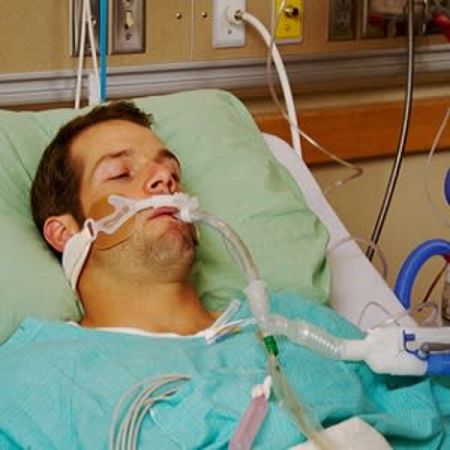The effectiveness of personalised mechanical ventilation in patients with acute respiratory distress syndrome (ARDS) is still unclear. A new study was conducted in France to test whether a mechanical ventilation strategy personalised to an individual patient's lung morphology could improve survival compared with the standard of care.
For the purpose of this study, 400 patients with moderate-to-severe ARDS were enrolled. Patients with early ARDS for less than 12 hours were assigned either to the control group or the personalised group. There were 204 patients in the control group, and they received a tidal volume of 6 mL/kg per predicted bodyweight. Positive end-expiratory pressure (PEEP) was selected according to a low PEEP and fraction of inspired oxygen table. Early prone position was encouraged in this group.196 patients were included in the personalised group. The treatment protocol for these patients was based on lung morphology. Patients with focal ARDS received a tidal volume of 8 mL/kg, low PEEP, and prone position while those with non-focal ARDS received a tidal volume of 6 mL/kg, high PEEP and recruitment manoeuvres. The primary outcome of the study was 90-day mortality determined by an intention-to-treat analysis.
Findings of the study showed no difference in 90-day mortality between the two groups. However, it was observed that nearly 21% of the patients were misclassified as having focal or non-focal ARDS. Study researchers found a significant interaction between misclassification and group allocation as far as the primary outcome was concerned. 90-day mortality was much higher for the misclassified patients in the personalised group compared to those in the control group.
Overall, findings from the LIVE study show that personalisation of mechanical ventilation did not decrease mortality in patients with ARDS. This was mainly due to the misclassification of a high percentage of patients. As per these findings, a ventilation strategy that is misaligned with lung morphology can increase mortality. It is important to further assess whether improvement in ARDS phenotyping can help improve clinical outcomes in patients with ARDS.
Source: The Lancet
Image Credit: iStock
References:
Constantin J et al. (2019) Personalised mechanical ventilation tailored to lung morphology versus low positive end-expiratory pressure for patients with acute respiratory distress syndrome in France (the LIVE study): a multicentre, single-blind, randomised controlled trial. The Lancet. doi.org/10.1016/S2213-2600(19)30138-9
Latest Articles
mechanical ventilation, acute respiratory distress syndrome, ARDS, lung morphology, personalised mechanical ventilation
The effectiveness of personalised mechanical ventilation in patients with acute respiratory distress syndrome (ARDS) is still unclear. A new study was conducted in France to test whether a mechanical ventilation strategy personalised to an individual pati



























